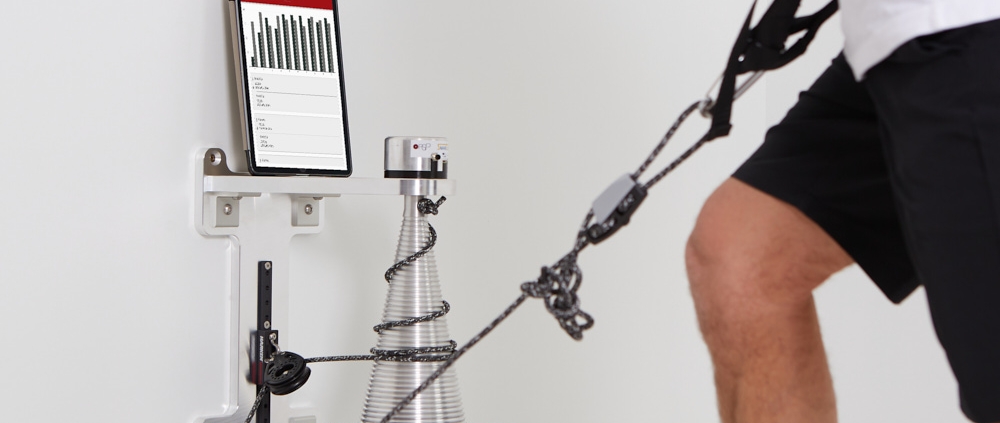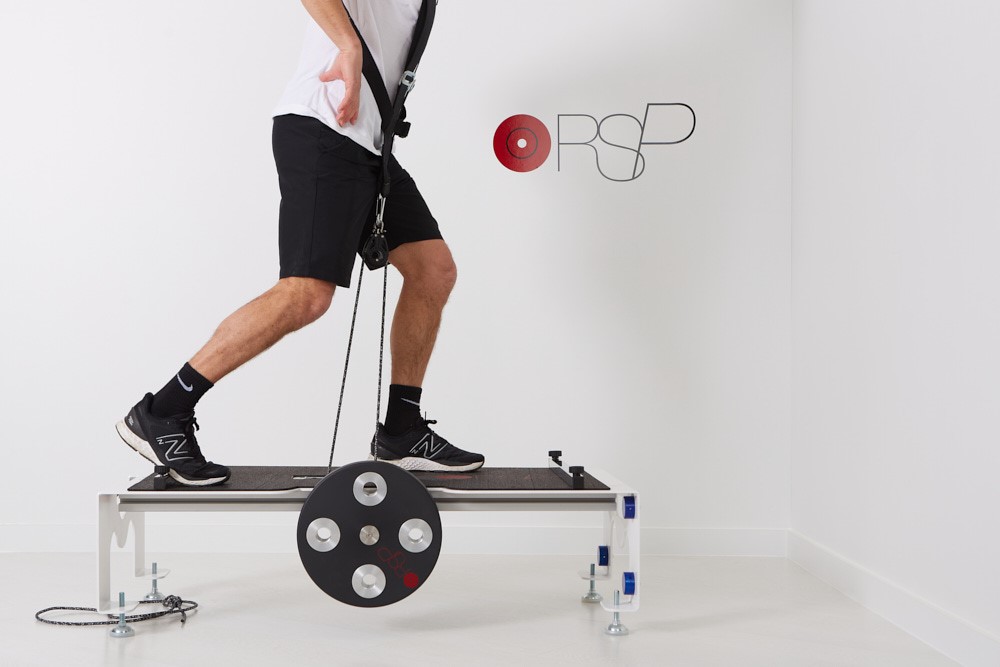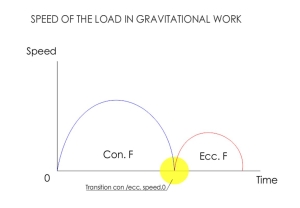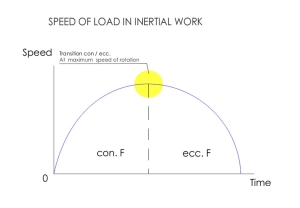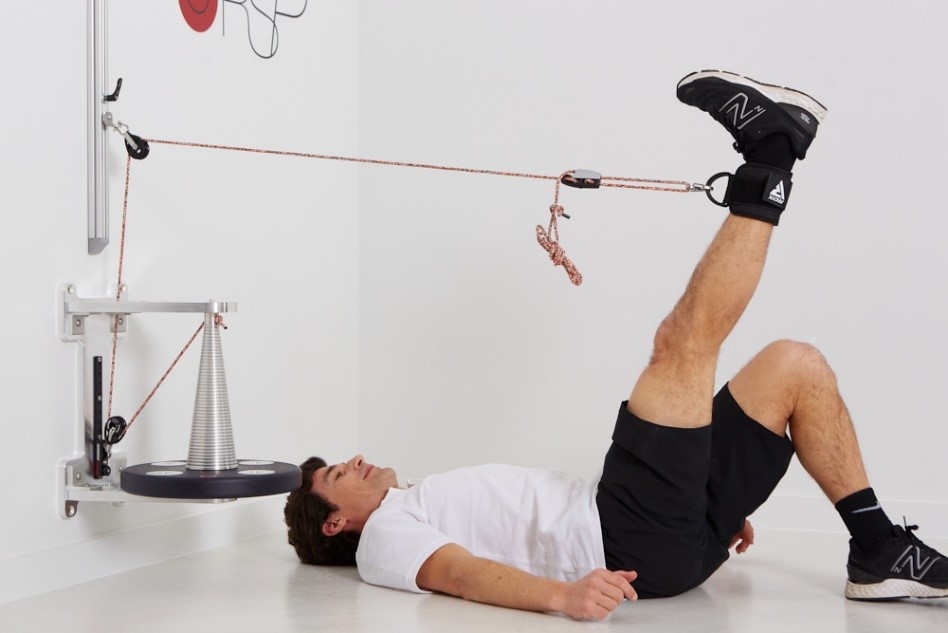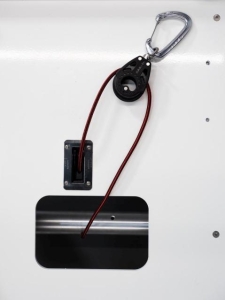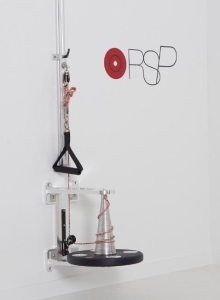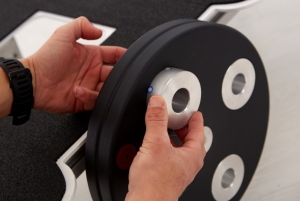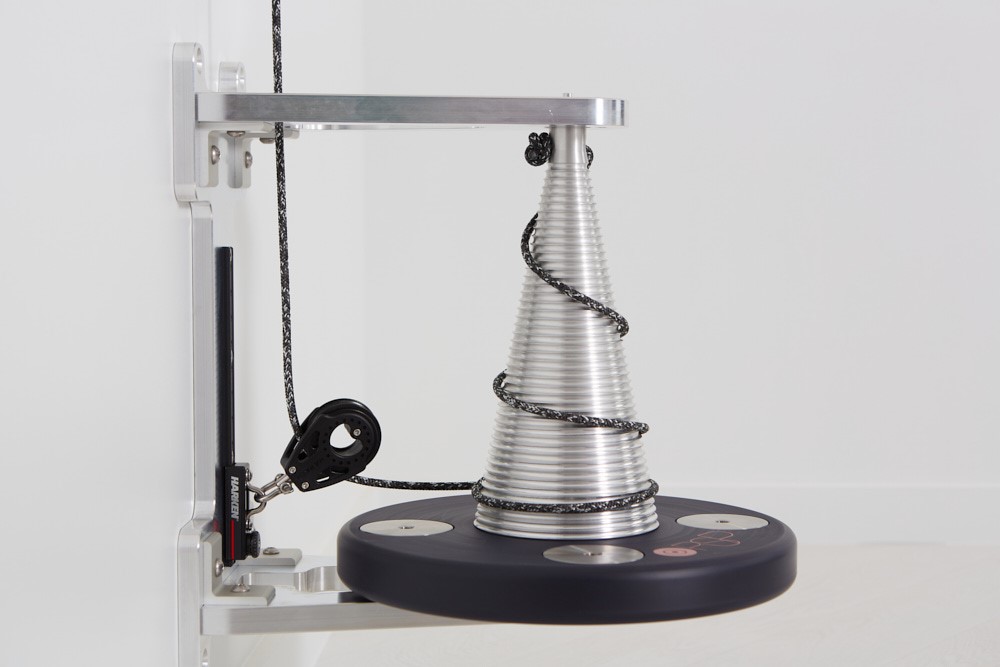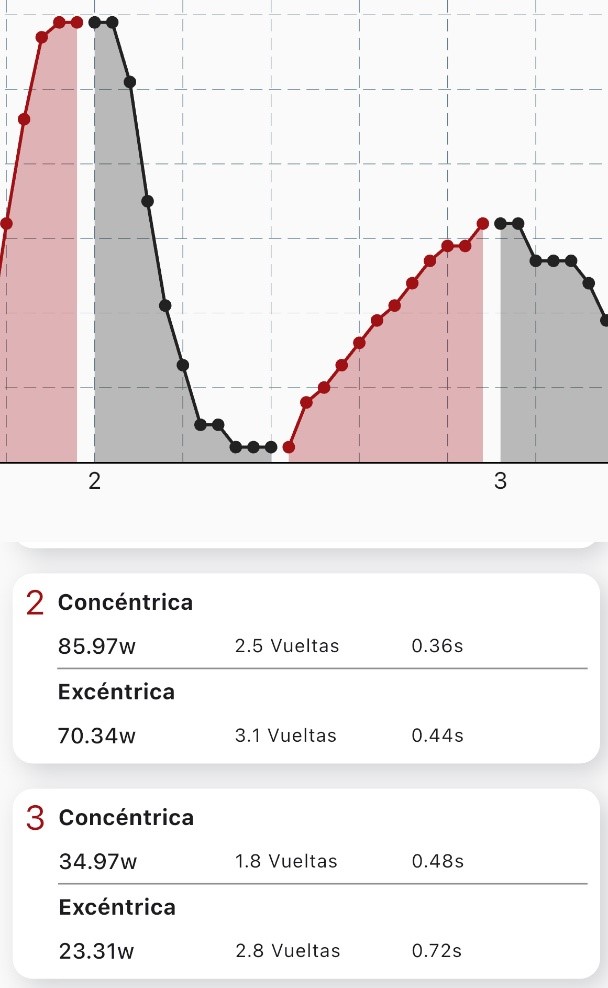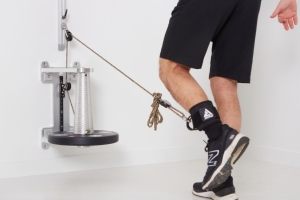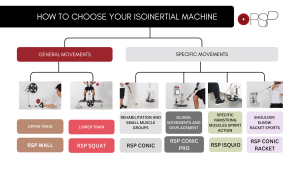FLYWHEEL TRAINING MACHINE: ESSENTIAL GUIDE
Introduction
This guide aims to explain in a simple and easy manner the use and adjustment of a flywheel training machine, detailing its different types and how to adapt the machine to our training objectives.
In sports, there are increasingly more high-intensity actions, both in acceleration and deceleration. This natural evolution, driven by the development of sports and greater competitiveness, forces physical trainers to evolve their training systems to provide athletes with the best physical resources, so they can manage them according to the demands of the game. Our goal should be to ensure that the athlete’s physical condition is never a limiting factor, and we must assume that the higher their capacities and greater their skill in applying them, the more tactical and technical resources they will be able to utilize by better managing the available space and time for execution.
Within this need to improve high-intensity braking actions, flywheel training machine emerge. Initially, they originated in the health field to address the problems of astronauts in weightlessness, and later they began to be applied in sports training to enhance these braking actions. It is important to highlight that working with this type of machinery is entirely different from traditional eccentric training, where we move a very heavy weight in the vertical plane at a very slow speed for an extended period compared to any sports action. It is essential to understand how the different tools work to make the best use of each one for the benefit of our athletes.
Differences between inertial training and traditional training
Understanding how a flywheel training technology works and being able to make the most of it with our athletes involves understanding how the speed curve of the load changes over the duration of a repetition of a strength exercise. This consists of a first phase where the load moves against gravity, known as the concentric phase, and a second phase where the load moves with gravity, known as the eccentric phase.
The main difference between traditional work and work with a flywheel training machine—and this is the key point—is that with the flywheel machine, the movement of the load does not coincide in the same direction as the athlete, which is always the case when working with traditional loads. The load always rotates in the same direction throughout the entire duration of that repetition, while in traditional work, the load changes its direction of movement at the end of the concentric phase and the beginning of the eccentric phase.
As shown in the graph, with traditional weights, both the concentric and eccentric phases always start and end at a speed of 0. With traditional loads, it is easy to determine the end of the concentric phase and the beginning of the eccentric phase because this transition occurs at a speed of 0, allowing the athlete to change the direction of their movement as the load goes from rising to falling.
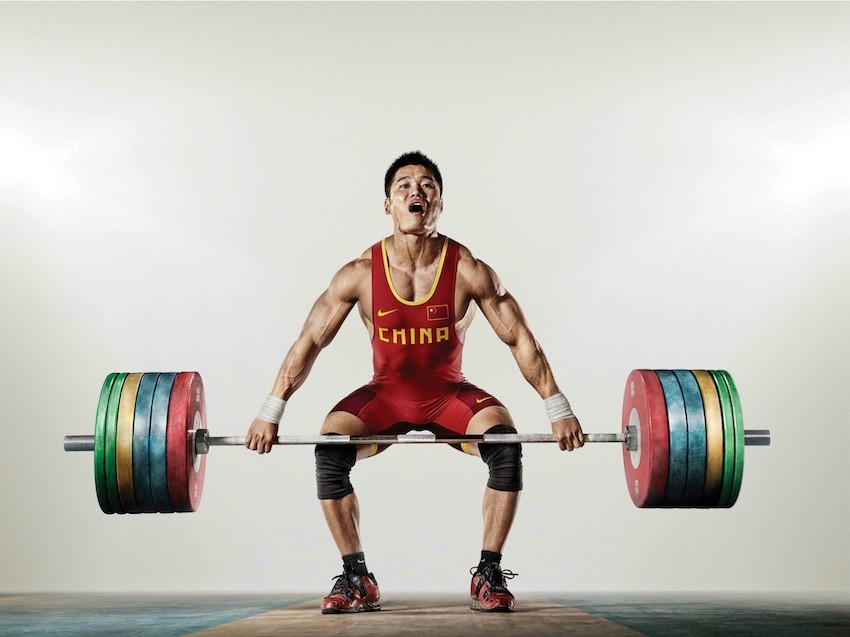
The athlete moves with the load
In training with flywheel machines, this does not happen since the direction of movement of the athlete does not coincide with that of the load. While the athlete will perform a concentric phase in one direction and an eccentric phase in the opposite, the load will maintain the same direction of rotation throughout the execution. This forces the athlete to execute a high-speed concentric to eccentric transition of the load, and on the other hand, to slow down the rotational speed of the flywheel throughout the eccentric phase until it comes to a stop to be able to perform another repetition.
The concentric phase starts at a speed of 0 for both the athlete and the load. As soon as the athlete applies force in the concentric phase, the flywheel begins to rotate, accelerating more and more until the athlete reaches the end of their range of motion and has to change their direction of movement while the flywheel continues to spin at high speed. The eccentric or braking phase begins at a moment close to the maximum rotational speed of the flywheel. This high-speed transition is the key to all inertial work, as the athlete must decelerate it during the eccentric phase until both the athlete’s and the flywheel’s speeds are at 0, allowing them to perform another repetition or simply to complete the exercise
This is the significant difference from traditional work and the reason why the objective of the flywheel training machine is to improve braking capacity. During the eccentric phase, we must decelerate the entire rotational speed of the flywheel that we have been able to accelerate during the concentric phase. Therefore, with these devices, what we can train and reproduce is the ability to accelerate and to brake, which are different actions and sports gestures.
Types of Flywheel training machines
- Fixed Radius Machines: The axle is a cylinder with the same characteristics.
- Conical Pulley: The axle is cone-shaped, varying its radius along the entire path.
Fixed radius machines are machines that have a linear response to the athlete’s application of force. They have a more structural orientation at the muscular level since the time under tension is greater due to their lower capacity to accelerate throughout the entire concentric phase. In these machines, a 1×2 rope demultiplication is used to enhance this more constant work.
Conical pulleys are machines with a much greater capacity to accelerate since the conical axle acts like the gears of a car, facilitating acceleration from the beginning to achieve a higher rotational speed of the flywheel. This allows the athlete to train at speeds very similar to their own sports gestures, and, above all, prepares their structures to manage the braking phase, which is, on the other hand, the linking phase to the next repetition or change of technical action.
The conical pulley will greatly improve the quality of movement, precision, and speed in changes of technical actions.
We emphasize the word “accelerate” because that is the key to subjecting the athlete to intense braking. We should not confuse or mix this with resisting a heavy load at low speed, even if it involves great effort. To brake from high speeds, the first requirement is to accelerate to high speeds in order to have an increasingly intense braking phase. Improving this acceleration-braking relationship is essential for enhancing the athlete’s performance, both in their speed of movement and in the execution of specific technical actions.
How can we adjust the load?
Adjustments on the flywheel training machine will modify the machine’s response to our application of force, making it easier or more difficult to accelerate and transition between eccentric and concentric phases. This affects the time needed to stop the flywheel and restart it.
- Varying the moment of inertia: By modifying the masses fixed to the flywheel, we can change the minimum force value that the athlete must apply just to start and stop the machine. The higher this value, the more difficult it will be for the athlete to stop and restart the machine, leading to an eccentric-concentric transition that requires the athlete to apply more force and therefore takes longer.
The best example to understand the value of inertia is a shopping cart in a supermarket. The more loaded it is, the harder it will be for us to change its direction to switch aisles, while walking with it at a constant speed is easy
- Varying the maximum radius: This can only be done with conical pulleys. As we raise the inner track of the pulley and begin to pull to accelerate the machine with a smaller radius, what happens is very similar to starting our car in 2nd or 3rd gear; we lose the ability to accelerate with the same application of force. By doing this, we bring the response of a conical pulley closer to that of a fixed radius machine.
The greatest virtue of a conical pulley is its ability to achieve much higher accelerations of the load than the athlete could generate without this tool, allowing us to create situations of intense braking with great safety. This intensity only manifests in the initial moments of the eccentric phase, after which the axle itself facilitates braking, performing the same function as the gears in our car.
Conical pulleys have a much more specific orientation towards the sports gesture, as they allow for very high accelerations of low loads, where all the complexity arises from speed and acceleration, not from the magnitude of the load.
As we have seen, flywheel training machines are used to improve the athlete’s ability to accelerate and brake, helping to enhance their performance in high-intensity acceleration-braking actions typical of modern sports. Thanks to the two types of devices (fixed radius machines and conical pulleys), we can generate appropriate stimuli that facilitate, on one hand, the structural development of the athlete for the current demands of competition, and on the other hand, train specific actions related to the sport, where knowing how to vary the speed of the implement and the athlete interchangeably will help us develop athletes with more resources and better preparation.
How to adapt the flywheel training machine to our training objectives
When making load adjustments on the flywheel machine, we must always understand that different adjustments will have very different responses in the machine and in our training objectives. To adjust the inertia, we should consider how we want the transition between repetitions to be; a smoother and quicker transition will be achieved with low inertia, while the opposite will occur as we increase it. To adjust the radius position on conical pulleys, we need to think about how much we want to accelerate. As we aim to increase this acceleration, we should use the largest axle diameter available by placing the pulley in its lowest position.
Moment of Inertia: We will always adjust this considering the volume of muscle groups we will involve and the implement we want to accelerate. For all global work involving wrestling, snatches, pulls, etc., we will work with the highest inertia possible since these actions require us to resist our position and apply high force values over a certain period.
For all specific work involving unipodal sports gestures, where accelerating a lightweight implement and achieving a high final speed is key, we will use the lowest possible inertias to facilitate this acceleration and help the athlete adapt to handling high speeds.
General guidelines for speed work
- High Inertia: for all global actions where the goal is to break the speed 0 as quickly as possible.
- Medium Inertia: for all actions aimed at developing maximum acceleration and reaching it as soon as possible.
- Low Inertia: for all actions where we want to maintain maximum speed repeatedly.
Diameter of the Axle in Conical Pulleys: we will always adjust this considering the acceleration objective of the movement we are aiming for. The maximum axle diameter will allow for greater acceleration of our technical gestures, and as we reduce this diameter by raising the track, we will lose the capacity to accelerate, increasing the execution time.
VERY IMPORTANT
There is only one essential key for effectively utilizing an inertial machine: correctly adjusting the length of the rope so that it never loses tension. If this happens, we must either move the athlete away from the machine or shorten the length of the rope.
The rope must always be taut.
Ramón Lago Ruiloba
+34 659910685

